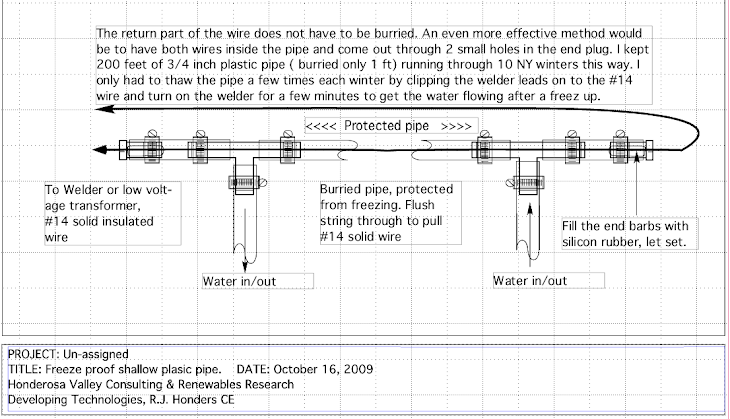
I have been using Pumps as Turbines and motors as generators very successfully for almost four years now. The optimum (maximum power) speed of a PaT is around 1/2 of its no load speed. So to test,run your PaT and generator with the available head but no electrical load or excitation. Then, for maximum power, you should load the system so it runs at 1/2 this No Load speed. So let's assume you have a six pole electric motor running as a generator at 1200 RPM (nominally). You would be looking for a No Load speed of (approximately) 2400 RPM at the generator shaft. If the PaT is direct coupled the only thing that can be tuned is the impeller diameter assuming the head is fixed. Cut down (on a lathe) the impeller diameter to increase the No Load RPM. If the generator is coupled to the PaT by a V belt the shiv ratios can be changed to give the correct RPMs.
How can I estimate roughly the maximum no load speed when impeller diameter and the net head are known?
No Load RPM= (19.1)(SQRT(64 H))/D
Where H= Head in feet, D= impeller diameter in feet (not inches)
So if H = 200 feet and Impeller Diameter is 7 inches we get a No Load RPM = 3699
This is a little high for a 4 pole (1800 RPM) generator, I'd rather be on the low end for better efficiency (less friction due to lower velocities). I would choose an 8" impeller. Or, (even better) go to a 6 pole 1200 RPM (direct coupled) motor, bring the no load speed down to 2400 RPM and calculate the required impeller diameter as below.
More often, you would know the full load normal operating speed of the generator to produce 60Hz from the name plate or the number of poles. Also the head is fixed and known. So you'll want to know what the impeller diameter should be for a direct coupled setup:
Impeller Diameter in inches = 230(SQRT(64 H)/R
Where H = head in feet, R = No Load RPM and SQRT = Square root
So if H = 200' and R = 2400, we get an impeller diameter of 10.8 inches.
These admittedly rough calculations work well with Pelton wheels as well as Francis type runners.
By the way, larger pumps are well designed and optimized to be very efficient. When run in reverse as turbines they perform just like Francis type turbines and are every bit as efficient, assuming you match up head, impeller diameter and operating speed.
The graph above shows how I reverse engineered the pump curves for for operation as a turbine. This analytical approach is not as easy to understand as the empirical approach described above. Note the U shaped > 73 % efficiency region. This is where you want to be operating this particular PaT with a 12 inch impeller, 230 ft of head, and using 750 Gpm with expected output of 25 Hp mechanical energy. BTW, pumps are designated by their outlet X suction inlet X impeller diameter. So this is a 3X4X12 end suction pump with a 30HP, 1800 RPM 3 Phase electric motor.












